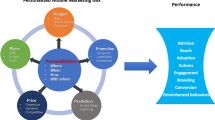Abstract
Customer Segmentation is an increasingly pressing issue in today’s over-competitive commercial area. More and more literatures have researched the application of data mining technology in customer segmentation, and achieved sound effectives. But most of them segment customer only by single data mining technology from a special view, rather than from systematical framework. Furthermore, one of the key purposes of customer segmentation is customer retention. Although previous segment methods may identify which group needs more care, it is unable to identify customer churn trend for taking different actions. This paper focus on proposing a customer segmentation framework based on data mining and constructs a new customer segmentation method based on survival character. The new customer segmentation method consists of two steps. Firstly, with K-means clustering arithmetic, customers are clustered into different segments in which customers have the similar survival characters (churn trend). Secondly, each cluster’s survival/hazard function is predicted by survival analyzing, the validity of clustering is tested and customer churn trend is identified. The method mentioned above has been applied to a dataset from China Telecom, which acquired some useful management measures and suggestions. Some propositions for further research is also suggested.
Similar content being viewed by others
References
Banasiewicz A. (2004). Acquiring high value, retainable customers. Database Marketing & Customer Strategy Management 12(1): 21–31
Chen L., Soliman K., Mao S.E., Frolick M.N. (2000). Measuring user satisfaction with data warehouse: An exploratory study. Information & Management 37(3): 103–110
Chen Y., Zhang G.Z., Hu D.F., Wang S.S. (2006). Customer segmentation in customer relationship management based on data mining, knowledge enterprise. Intelligent Strategies in Product Design, Manufacturing, and Management 207, 288–293
Fraley C., Raftery A.E. (2002). Model-based on clustering, discriminant analysis and density estimation. Journal of the American Statistical Association 97, 611–631
Freytag P.V., et al. (2001). Business to business, market segmentation. Industrial Marketing Management 30(6): 473–486
Gupta S., Lehmann D.R., Jennifer A.S. (2004). Valuing customers. Journal of Marketing Research 41(February): 7–18
Hosmer J.R., Lemeshow S. (1999). Applied survival analysis: Regression modeling of time to event data. New York, John Wiley & Sons
Hu, D. F., Chen, Y., Zhang, G. Z. (2006). In K. Wang, G. Kovacs, M. Wozny, & M. Fang (Eds.), Knowledge enterprise: Intelligent strategies in product design, manufacturing, and management (pp. 304–310). Boston: Springer.
Kim J., et al. (2003). Segmenting the market of West Australian senior tourists using an artificial neural network. Tourism Management 24(l): 25–34
Kleinberg J., Papadimitriou C., Raghavan P. (2004). Segmentation problems. Journal of the ACM 51(2): 263–280
Nairn, A., & Bottomley, P. (2003). Cluster analysis procedures in the CRM era. International Journal of Market Research, 45, Quarter 2.
Reinartz W., Krafft W., Hoyer W.D. (2004). The customer relationship management process: Its measurement and impact on performance. Journal of Marketing Research XLI(August): 293–305
Sub E.H., Noh K.C., Suh C.K. (1999). Customer list segmentation using the combined response model. Expert Systems with Applications 17(2): 89–97
Tan P.N., Steinbach M., Kumar V., (2006). Introduction to data mining. Beijing, Posts & Telecom Press, pp. 310–320
Verhoef P.C., Spring P.N., Hoekstra J.C. (2003). The commercial use of segmentation and predictive modeling techniques for database marketing in the Netherlands. Decision Support Systems 34(4): 471–481
Wedel M., Kamakura W.A., Bockenholt U. (2000). Marketing data, models and decisions. International Journal of Research in Marketing 17(2–3): 3–208
Author information
Authors and Affiliations
Corresponding author
Rights and permissions
About this article
Cite this article
Chen, Y., Zhang, G., Hu, D. et al. Customer segmentation based on survival character. J Intell Manuf 18, 513–517 (2007). https://doi.org/10.1007/s10845-007-0059-z
Published:
Issue Date:
DOI: https://doi.org/10.1007/s10845-007-0059-z




